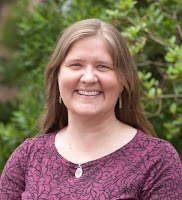Selecting Assistive Technology (AT) for young children - a cooperative decision of understanding
By: Carrie Portrie, M.Ed, EC-SEAT project coordinator
Selecting AT for young children birth to age 8 takes time, creativity and collaboration. While searching through current AT related articles and websites this morning, I found myself at Understood.org reading articles by Amanda Morin. She reminds parents of their role and provides resources to support AT device and service selection for children.
Creating an opportunity for parents and educators to talk together about AT, is essential to successful implementation and consistency. Morin (2014) provides a checklist of questions for parents to ask when AT is being considered for their child. A few questions she lists are:
Carrie is a doctoral student at the University of New Hampshire studying Education: Children and Youth in Communities with a particular interest in inclusive learning environments, student and teacher educative risk-taking and Universal Design for Learning.
Selecting AT for young children birth to age 8 takes time, creativity and collaboration. While searching through current AT related articles and websites this morning, I found myself at Understood.org reading articles by Amanda Morin. She reminds parents of their role and provides resources to support AT device and service selection for children.
Creating an opportunity for parents and educators to talk together about AT, is essential to successful implementation and consistency. Morin (2014) provides a checklist of questions for parents to ask when AT is being considered for their child. A few questions she lists are:
- "How will AT help my child learn more successfully? Will it help him become a more independent learner?
- Which of my child’s issues will this tool address? How will it help him work around his challenges?
- What strengths does he have that will work well with certain tools or devices? (For example, a child who has trouble reading but has good listening skills might do well with audiobooks.)"
Collaboration and understanding amongst stakeholders in children's lives is essential for thriving families and communities. Understood.org is an effort supported by 15 non-profits to provide comprehensive resources for parents. They state on their website:
Our goal is to help the millions of parents whose children, ages 3–20, are struggling with learning and attention issues. We want to empower them to understand their children’s issues and relate to their experiences. With this knowledge, parents can make effective choices that propel their children from simply coping to truly thriving.This website, thinking about AT selection, and collaboration with parents reminds me children's education should not be about getting a result and moving on. Learning and educational supports change regardless of age, position, or ability (ex. children, parents, teachers, administrators, clinicians etc.). Humans are dynamic so our learning environments and supports should be as well.
Carrie is a doctoral student at the University of New Hampshire studying Education: Children and Youth in Communities with a particular interest in inclusive learning environments, student and teacher educative risk-taking and Universal Design for Learning.




Comments
Post a Comment
We invite you to share your thoughts and additional resources with our community of readers.
Also, contact us if you would like to be a guest blogger.